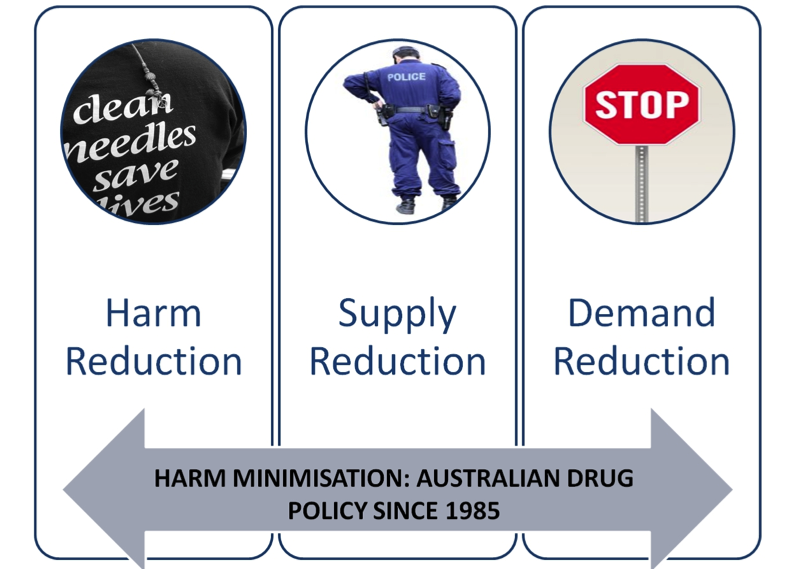Listen to this page
Harm reduction
In Australia Youth AOD services are philosophically committed to Harm Reduction, a key tenet of Australia’s National Drug Strategy since 1985.
What’s the difference between ‘Harm Minimisation’ and ‘Harm Reduction’?
Harm Reduction is one of the three pillars of the World Health Organisation’s Harm Minimisation policy. The other 2 pillars are Demand Reduction (Prevention) and Supply Reduction (Law Enforcement).
Harm reduction focuses on minimising the negative effects of substance use without necessarily seeking abstinence or a reduction in use. See Harm Reduction Victoria.
This means that young people receive services whether or not they choose to abstain from, or reduce, their substance use. There is evidence that an abstinence-based or zero-tolerance approach to service provision is ineffective for adolescents.
Assessing Harms
Use the table (see below) as a guide to assessing the harms of substance use
When supporting young people with multiple and complex needs, a harm reduction approach can be applied to the other areas of need including mental health problems, homelessness, or involvement in the justice system.
A harm reduction approach allows for the exploration of the enjoyable and functional aspects of their substance use, alongside any dangerous practices and detrimental consequences.
This shows the client that their perspective is heard and respected creating further discussion of the meaning substance use has in a young person’s life, and informing the care plan development.
General AOD Harm Reduction Strategies
- Don’t use alone
- Use somewhere safe
- Keep your phone charged in case you need help
- Don’t hesitate to call an ambulance

